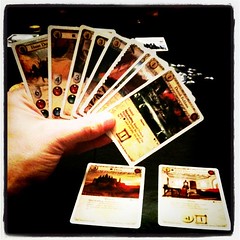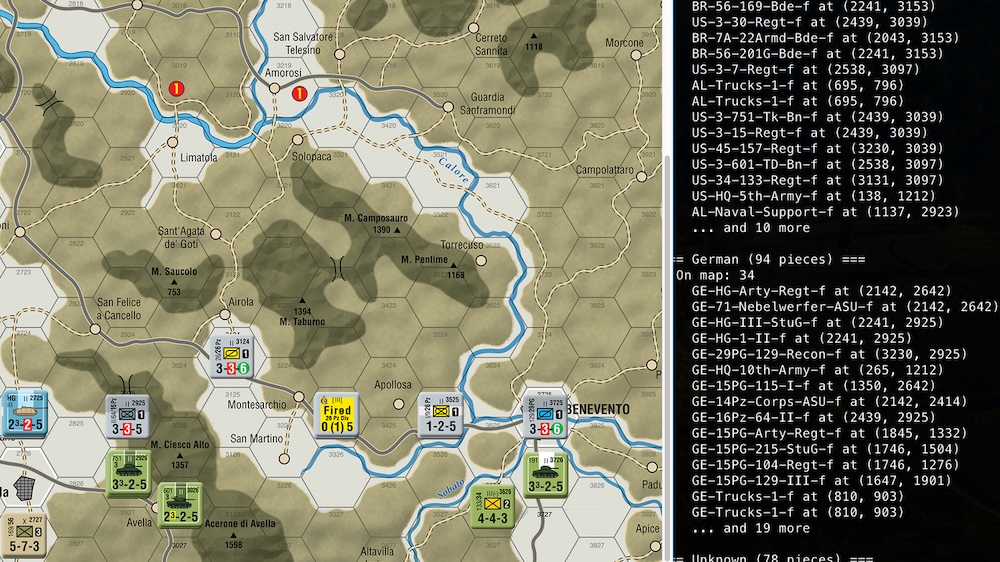Diving into A Game of Thrones LCG
Given that I'm diving deep into the Game of Thrones Living Card Game (LCG) from Fantasy Flight Games (FFG) I thought others might benefit from a detailed discussion of how I'm ramping up on learning the game and acquiring cards to expand my deck-building options.
Learning and Rules
While the game is relatively easy to play out of the core set box, it took 3-4 games before I felt like I had a handle on the subtleties. I've been playing Magic: the Gathering for over 16 years now and that is the framework I use to learn games like this. As a result I make assumptions about when cards can be played, how characters can be saved, and a wide range of timing considerations. Turns out many of those assumptions turn out to be flat wrong, which is mostly a good thing as the timing framework for GoT is much more constrained and rigid than Magic.
Here are the resources I used to ramp up (roughly in order). Realize that there's no substitute for playing the game and looping back to these resources to check out questions and possible gaps in understanding.
- Core set rules - These are well written rules but are intentionally incomplete. There is also a set of instructional videos that you may find useful.
- BoardGameGeek rules forum
- Fantasy Flight rules forum
- Fantasy Flight FAQ - I really like the timing flowcharts (you can even make some quick reference cards if you like), but don't worry about trying to comprehend these until you've played a few times.
Getting Cards
Get out your credit card! The positive side of the transition away from the randomized collectible format to the fixed "living" format is that you can strategically pick and choose what you want to acquire to expand your deck building options. No need to buy a box of boosters in the hope that you get three copies of a particular rare card (accumulating 15 copies of a common along the way). The flip side of this is that the predictability may in the end contribute to a higher spend for the casual (non-tournament) gamer. I suspect this is what Fantasy Flight is counting on.
There are three different packages of cards provided with the LCG:
- The Core Set - this is the board-game style packaging that includes smallish starter decks for four of the houses: Stark, Lannister, Baratheon, and Targaryen. It also includes some gratuitous (but well designed) components to support multi-player games. For those that want to dive deep into the game, realize that very few of the cards in these decks have duplicates.
- The Deluxe Expansions - these expansions generally cover a single (or two different) houses and introduce more depth in house-specific cards along with generic neutral cards that fit with the theme. FFG continues to evolve the structure of these expansions (kudos to them - they are listening to their customers) and the current model is that these contain three copies each of about 55-60 new cards. This change is exactly the reason I do not have a Greyjoy deck yet - FFG is relaunching the Kings of the Sea expansion to include 3 copies of the 60 cards at a retail price point of $29.95. Contrast this to the prior contents of a single 60 card deck and a resin house card. Note- the three copy of each card change is important because that is the maximum count in a deck.
- Finally, there are Chapter Packs that are roughly released on a monthly cycle. These are bundled as part of a thematic package and have also undergone a format revamp in the past year. Early chapter packs had 10 singletons and 10 triplicates for a total of 40 cards. If you want three copies of any of the singletons you have to buy three copies of the pack (priced at $9.95 retail). The new format has 3 copies each of 20 new cards priced at $14.95 retail. Again, good move FFG. Next on deck is the Secrets of Oldtown series.
So what did I buy to get started? Maybe more than I should have, but here's the list:
- Two copies of the core set. This gives me two copies of most of the important (and thematic) characters which is just fine for unique characters.
- The following deluxe expansions: Princes of the Sun (for Martell), Lords of Winter (love Stark and there are some cool agenda cards contained), and Kings of the Storm (enhance Baratheon plus agendas).
- A few select chapter packs that were recommended on a BGG post: Refugees of War, Sacred Bonds, Ancient Enemies and Mountains of the Moon. Going forward I suspect I'll buy the chapter packs as they are released until I tire of the game.
Deck Building Strategy
Did I mention that I'm still a newbie? My recommendation for getting started is to ready the legacy CCG getting started guide from FFG. It covers some basic principles for deck composition that will help you evolve from using the pre-packaged decks to your own constructs.
That's all I can help with now. Ask me again in a month or two after vie explored more.
Draft Ideas
One of my favorite Magic tournament formats was the booster draft. Given the non-random packaging of the LCG this isn't really a viable structure, but I won't let that stop me. The legacy CCG cards by and large work just fine with the LCG cards (though probably not for tournament play). You can find very inexpensive boxes of boosters online, and I bought a few and will try this format over the weekend.
Similar to how Magic booster drafts often allow players to choose lands from a separate pool, this game used booster draft packs (contents) to ensure that players can build playable decks.
The contents of the supplemented draft pack was:
- All 6 House Cards
- 7 Plots: Fortified Position, On Raven's Wings, Wildfire Assault, Counting Coppers, Filthy Accusations, Alliance, Taxation
- 20 Locations: 1x Fallow Fields, 1x The God's Eye, 3x The Roseroad, 3x The Searoad, 3x Kingsroad Fiefdom, 3x Sunset Sea, 3x Narrow Sea, 3x Summer Sea
- 6 Characters: 1x House Umber Recruiter, 1x Dissident Crier, 1x Stormlands Peasant, 1x Godly Fisherman, 1x Illyrio's Man, 1x Desert Scavenger
I have a box of these booster draft packs in transit, but I'll be simulating packs for the weekend using existing cards I have. More to come soon after I try this out.









